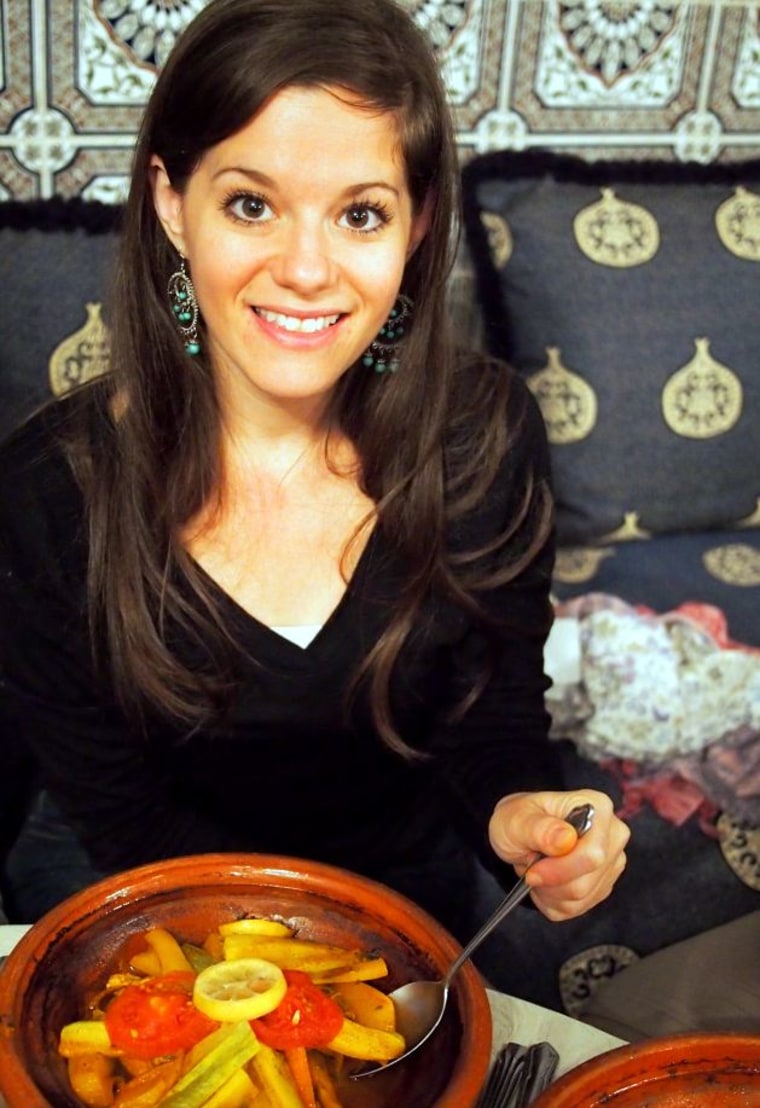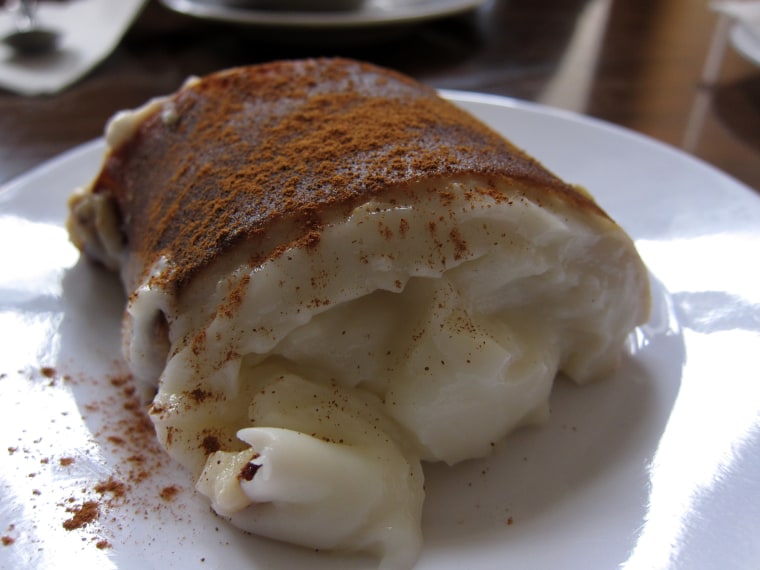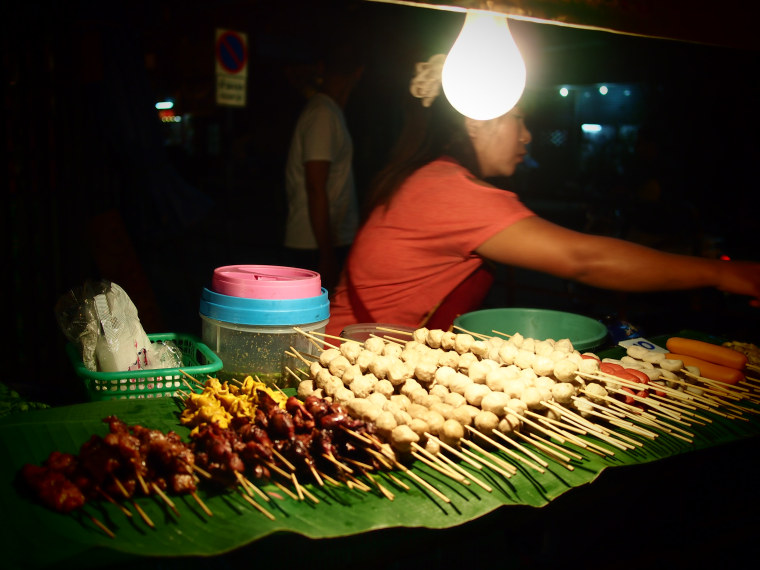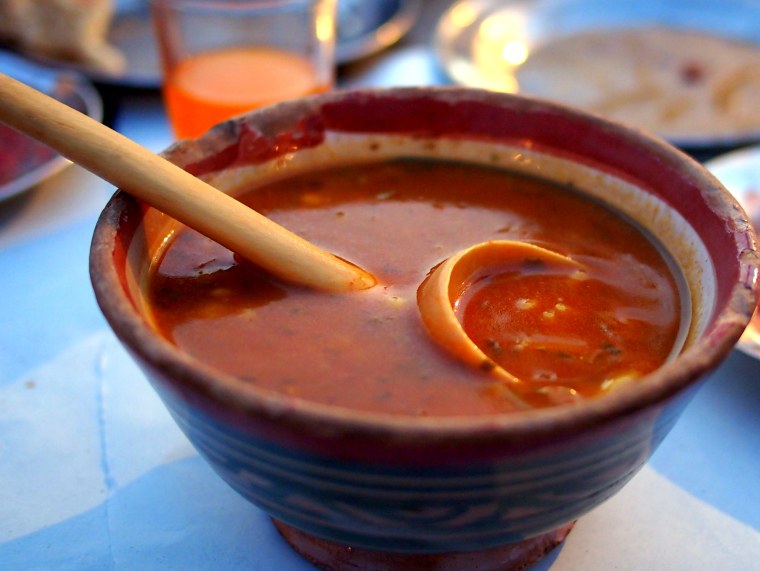
“What’s the craziest dish you’ve ever eaten?” As a longtime traveler who’s eaten her way through 63 countries, it’s the question I receive most often.
The query is asked breathlessly, accompanied by a wringing of the hands or a look that says “try to shock me with your crazy food, travel lady”. The answer, however, is usually a surprise. It’s not fried bugs or fermented, stinky tofu (which are crunchier than expected and stinkier than expected, respectively), but chicken pudding.
I first tried it at a cramped restaurant near the Bosporus in Istanbul, and it has been a favorite ever since. But it is crazy. It’s a dessert, made with chicken. You wouldn’t know it trying the dish; it tastes like a thick vanilla pudding, baked and topped with cinnamon. But the chicken is there, boiled and mashed and mixed up with all the custard.
People recoil visibly at the idea of chicken pudding, despite my insistence that it is delicious. What makes the answer so crazy is how simple it is, a twist for those who expect something like “live snake blood” as my answer.

I’ve been traveling around the world for the last four and a half years, writing about my misadventures on my site, Legal Nomads. I started out in South America, winding my way around the continent for months. From then it was to South Africa, then up to Russia, spending a month in Siberia and marveling at the wide openness of Mongolia's Gobi Desert. I crossed into China at Erlian, spending a month with friends in Beijing and then began eating my way around Southeast Asia in earnest, from the Philippines, to Malaysia to Myanmar and many countries in between. More recently, I discovered the spices and foods of Morocco and Jordan. Still, there are many more countries I wish to visit!
As the first year of travel rolled into the second, I found myself drawn to the stories and history behind the foods we eat, and the cultural mores that accompany them. From trying spicy laksa in Melaka, Malaysia (a soup so spicy it left locals in tears) to drinking fermented mare’s milk in Mongolia, I’ve quenched my curiosity with many adventurous foods.
It was only natural that these experiences, as well as many reader questions about food sickness, would lead to a book. I chose to tackle food and travel from the perspective of street and market eats — cheap but delicious. Of course, when eating street food in a foreign country, safety is always a concern. So here, I’ve gathered some tips I’ve learned over the past few years to help you through your own street food journey:

- To start off, aim for food that has been fully cooked. My worst bout of food poisoning was from eating a llama empanada on the Bolivian border that was not cooked the whole way through. Despite knowing it was likely a terrible idea, I ate it, and then paid for it in spades. If your dish is cold in the center, you want to order something else or ask for it to be put back in the oven or wok for another few minutes.
- For a quick and cheap meal I often recommend big universities at lunchtime. Because they cater to hungry students, their food turnover is usually fast, so there is less chance the food has been sitting for a long time. An added bonus is that it is usually authentically local.
- I don’t leave home without portable chopsticks, useful in the rare cases where food is fresh but where the utensils might not be washed as thoroughly as you might like. A second best: baby wipes to wipe down the utensils you receive. You might get a few funny looks, but your stomach will thank you later.

- For those with iPhones, an option for bridging language barriers is ICOON, a picture dictionary. A paper version can be found via the Point-It Dictionary. Both can be useful when you have questions about what is being served, but no language in common with the server.
- Wash your hands often. It's simple advice, but it would be foolish to ignore it in countries with unfamiliar bacteria. I’m not advocating constantly dousing your hands in disinfectant, but rather washing them before meals when you can manage it. Many foods in Southeast Asia and South America are eaten with the hands, and you want your hands to be clean.
- Pay attention to mealtimes and eat your bigger meals when locals do. In Myanmar, I learned that many locals would eat a large curry at lunch, and in many cases the curry pots would sit out for the afternoon. Expats warned that eating roadside curries was advisable at lunchtime when the restaurants were busiest, but not later in the afternoon.
While restaurants provide their share of delicious and authentic local eats, I prefer the street, with all its chaos and noise, where you can watch a mealtime unfold right before my eyes. Even if you don’t plan to make street eating a habit, give it a try for one meal on your next trip. After you eat, sit at the table and watch the movement and routine around you. You’ll appreciate the food that much more the next time as a result.
Jodi Ettenberg is a Canadian native who has been eating her way around the world since 2008. She is the author of the recently published Food Traveler’s Handbook. She is also the founder of Legal Nomads, which chronicles her worldwide travel and food adventures. Follow her on Twitter, Facebook or Instagram.
More from TODAY Food: